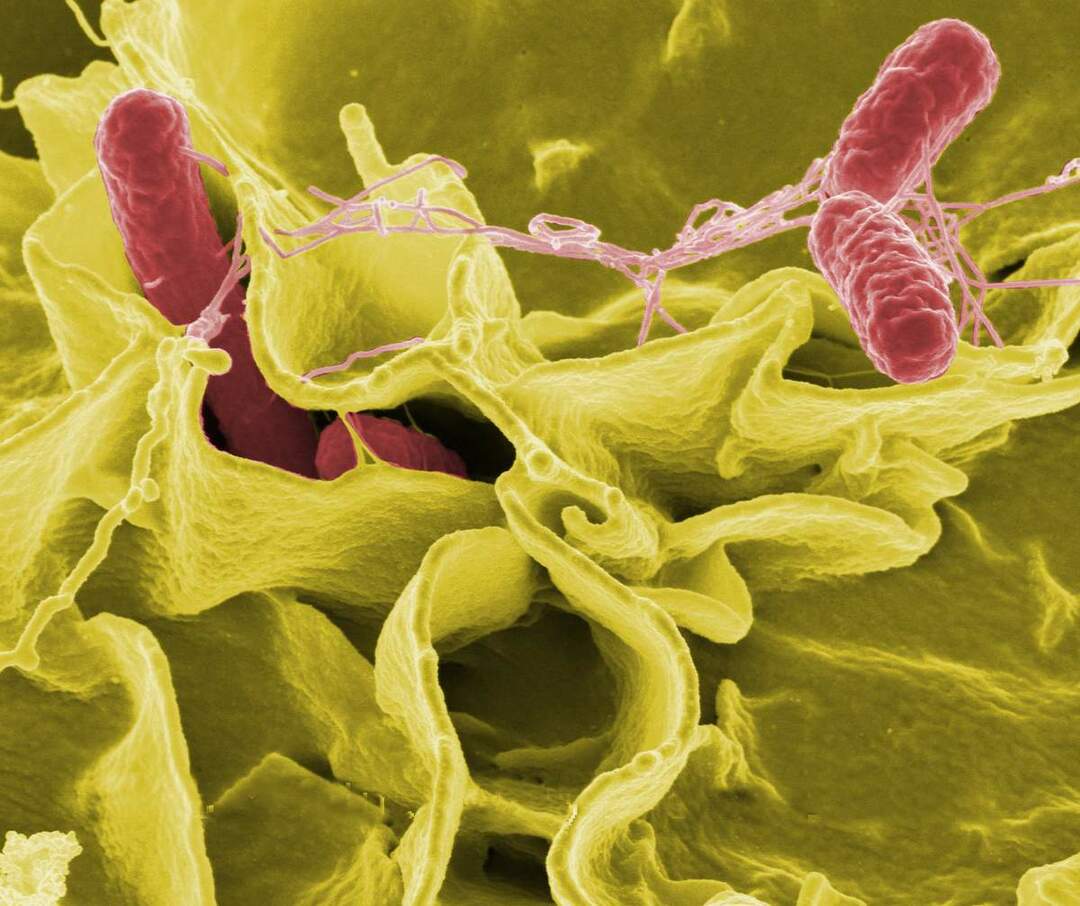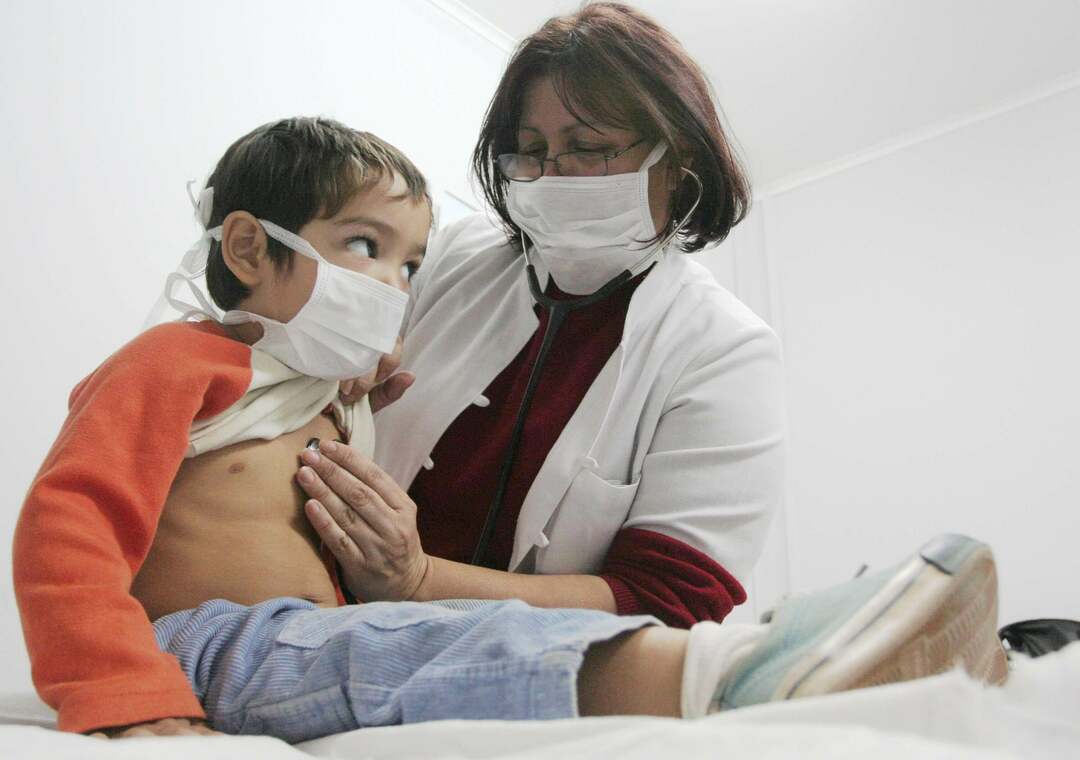Swine flu diagnosis and treatment
 Swine influenza refers to acute viral diseases, and is caused by the influenza A virus( this is a subtype of H1N1).This virus is mainly affected by pigs, but has the ability to be transmitted to humans. Today's article "Swine Flu: Diagnosis and Treatment" will help you learn more about what this disease is.
Swine influenza refers to acute viral diseases, and is caused by the influenza A virus( this is a subtype of H1N1).This virus is mainly affected by pigs, but has the ability to be transmitted to humans. Today's article "Swine Flu: Diagnosis and Treatment" will help you learn more about what this disease is.
Causes of swine flu.
The causative agent of this disease belongs to viruses containing RNA.Family Orthomyxoviridae group of pneumotrophic viruses. The virions of the causative agent are oval in shape, in diameter they reach up to 100 nanometers, they are covered with a shell. The composition of the envelope includes haemagglutinin( H) and neuraminidase( N )( 2 characteristic proteins).Taking as a basis the antigenic features of these proteins, different subtypes of influenza viruses were isolated. H1N1 is a combination of surface antigens that is characteristic of swine flu.
The causative agent of the swine flu.
The nucleocapsid of the virus includes coagulated RNA, as well as the enzyme RNA polymerase. The causative agent of this disease has a small resistance to environmental phenomena, so when exposed to ultraviolet, disinfectants, boiling, heating quickly dies. And at low temperatures, its activity can last for a long time. The main source of pathogens are mainly pigs( and other sick animals), but a person can get infected from both an animal and a sick person. The disease is transmitted by airborne droplets. You can get infected through a contact path, that is, by mechanical contact with the mucous membranes of the infected material. When you use infected meat, the probability of infection is zero.
Symptoms of swine flu( clinical manifestation of the disease).
The incubation period is three days. The disease can occur in mild, moderate or severe forms.
Signs indicative of swine flu:
- general weakness;
- increase in body temperature to 39-40 ° C;
- shatter;
- headache, which is mainly localized in the forehead region;
- arthralgia;
- myalgia;
- sore throat;
- paroxysmal dry cough, which after five days passes into a cough with sputum discharge;
- rhinorrhea;
- nausea, diarrhea( in some cases);
- decreased or no appetite;
- heaviness in the chest, dyspnea may develop.
Swine influenza is clinically similar to the influenza virus, and, as a rule, has a lighter flow. Nevertheless, it has a distinctive feature - frequent gastrointestinal lesions.
A heavier form of the disease occurs in children, the elderly, pregnant women, in people with concomitant somatic diseases in severe form. The severe form of swine flu can lead to a breakdown in consciousness, to a serious condition of the patient.
Swine flu can lead to the following complications: pneumonia, neurotoxication, respiratory failure, cardiovascular insufficiency. Infection can provoke an exacerbation of concomitant somatic diseases, and this will only increase the course of infection.
Swine Flu: Diagnosis.
The basis of diagnosis is the identification of symptoms and immunological studies. The express method( that is, in real time) is a polymerase chain reaction - PCR.
If a RNA virus is detected and the fluorescent label is disconnected from the absorber, a luminescence appears, which is enhanced by an increase in the number of DNA chains synthesized. Take a swab from the throat and nose, which is examined for at least 20 minutes.
Polymerase Chain Reaction: Analysis for the detection of swine influenza.
A pure culture of the virus is allocated( using certain cell cultures), remaining in which the virus begins its cytopathic effect( appearance in damaged epithelial cells of plaques - conglomerates of virions).Take a smear from the throat and nose and is examined for 3 days.
Increase of antibody titres by 4 times to the virus H1N1( swine influenza A virus).For this, blood from the vein is taken and is examined for one hour.
Note: this method has not yet found its wide distribution, because it is necessary to have data on antibody titres to the H1N1 virus before the onset of the disease, in order to compare with antibody titers during the swing of swine flu.
Fourfold increase in titer: analysis for the detection of swine flu.
Electron microscopy is not a method of mass diagnostics. Most often this method is used by scientific centers. But it is quite suitable for an approximate way of determining the viral etiology of the disease.
Swine flu: treatment.
Treatment of this disease is symptomatic and antiviral therapy. When prescribing antiviral therapy,
- medications are prescribed for interferons alfa( geneferon suppositories, viferon suppositories, realiron vials, roferon-A vials).These drugs have a considerable antiviral effect, which makes it possible to increase their significance in the therapy of the H1N1 virus. With the appointment of interferons alpha daily dose is prescribed depending on the severity and age of the patient and is 150 000-1000000 units. The course of treatment is 10 days at least;
- arbidol has antiviral effect, the greatest effectiveness is observed during the first five days from the onset of the disease. Then from reception of this preparation there will be no such efficiency. The drug is given in the form of tablets of two hundred milligrams and is taken every six hours for a minimum of 7 days;
- oseltamivir is highly effective against almost all influenza viruses, and hence pork. Adults are prescribed a drug in the form of tablets of 70 mg, which are taken every 12 hours, for five days;
- kagocel is an immunomodulating drug, contributing to an increase in the production of endogenous interferon. Kagocel is available in the form of tablets of twelve milligrams. It is prescribed according to the scheme: the first day - two tablets a day 3 times, the next three days one tablet a day three times, then 7 days a day 2 tablets a day. The drug is effective for prevention or with a mild course of the disease.
Symptomatic treatment of swine flu includes anti-inflammatory and antipyretic drugs( ibuprofen, paracetamol), vitamin therapy( multitabs, vitrum, centers).Also prescribed antihistamines( tavegil, diazolin, suprastin).When attaching a secondary bacterial infection, antibiotics of a wide range of effects are recommended: penicillins( amoxiclav, flemoxin, augmentin), cephalosporins( suprax, ceftazidime, cefazolin), macrolides( azithromycin, fromilide, chemomycin).In severe course of the disease, infusion therapy is prescribed, as well as muscle relaxants, glucocorticosteroids, drugs that affect the cardiovascular system.



